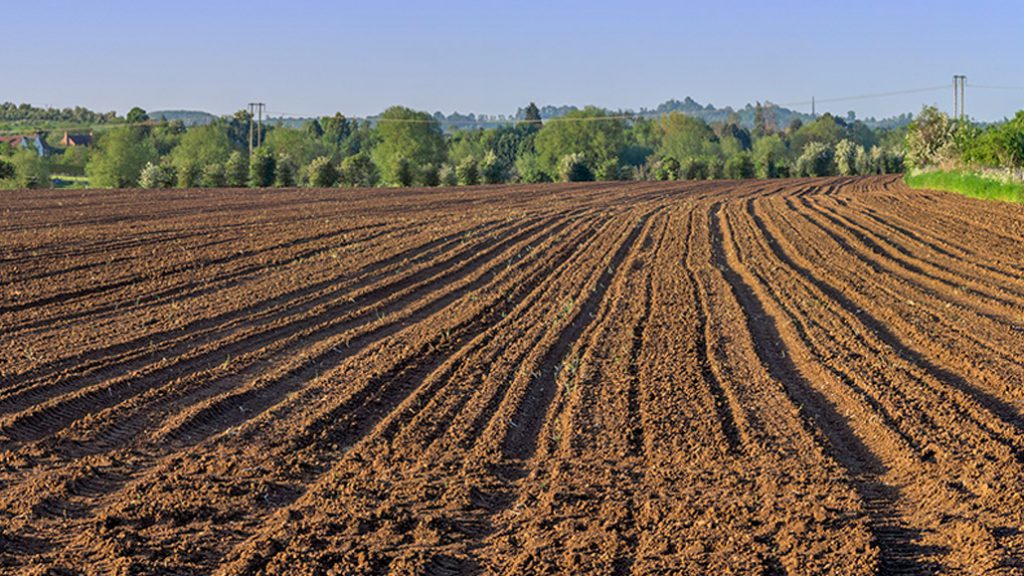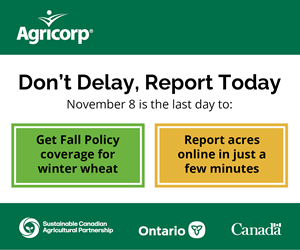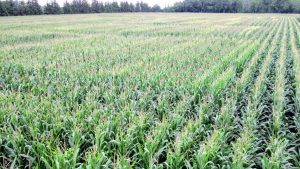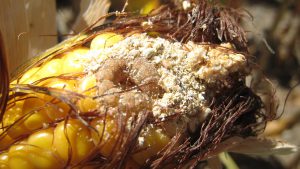Phosphorus loss
FINDING CUSTOMIZABLE SOLUTIONS IN DIVERSE LANDSCAPES

REDUCING NUTRIENT LOSS to improve aquatic ecosystems is a big task. Doing so requires an understanding of how phosphorus (P) moves through Ontario’s soils, and how management practices could be adapted to fit our province’s diverse landscape.
Two recent research projects have made progress on both fronts.
SOIL DIFFERENCES
While P loss from agricultural land is a known issue on both sides of the border, studies from the United States often do not reflect what researchers have been finding in Ontario, say Dr. Merrin Macrae and Dr. Janina Plach, the University of Waterloo researchers tasked with investigating why this is the case.
“What we’re seeing in Ontario in terms of concentrations in tile drainage, is that there is a pretty stark contrast in what we were seeing for water quality compared to what they were seeing at similar sites in the U.S.,” says Macrae. The theory was differences in soil chemistry between Ontario and the United States, as well as within the province itself, were the controlling factor.
Much of Ohio, for example, is characterized by more acidic clay plains. Areas like Essex County largely fall into the same category, while central areas of Ontario are comprised of more alkaline, loamy soils.
Core samples were taken at eight Lake Erie watershed sites in Ontario, Ohio, and Indiana, with Macrae and Plach analyzing how P moved through each. Overall, the alkaline, loam soils of central Ontario were much more effective at binding the nutrient.
“The phosphorus ends up binding to the soil less strongly in acidic, fine textured clay. It ends up being more available in the soils, so the risk of loss can be higher in that area,” says Plach, though she adds there is still significant variability in phosphorus concentrations in surface runoff.
They also found differences in P concentrations between the soil surface and subsurface are not as profound as that between different soil types. Both surface and the subsurface (via tile drains) are important pathways for P loss, but the relative role of each appears to differ depending on the topography and soil type of the region.
“We can’t put it down to a retention factor. We’re just trying to say there is stronger buffering in some of these soils. But subsoils can’t take care of everything,” Macrae says.
ON-FARM IMPACTS
From an academic standpoint, these revelations explain why there are such discrepancies between Ontario data and data published by the United States Department of Agriculture. This reduces uncertainty, meaning future recommendations on mitigating P loss can be made with greater confidence.
On the farm, farmers who know their soil type can take field-specific action. In Ohio, for example, some farmers are trying to increase soil pH levels via lime and calcium applications.
“If you know how phosphorus is bound to the soil you can try to manage that,” says Macrae, though she reiterates more work needs to be done before definitive solutions that work for Ontario farmers can be established.
ACCOUNTING FOR ONTARIO’S DIVERSE LANDSCAPE
To that end, Macrae and Plach are also working on an ongoing project designed to find exactly how P is being lost from Ontario fields. The complementary study involves collecting field-edge samples from three Ontario agricultural landscapes, each with different soil textures, topography, and climate zone.
Samples were taken over five years at sites in Ilderton and Londesborough, and four years at sites in Essex. Results thus far indicate most P is being lost via tile drains in areas with fine textured soils (such as in Essex County). In the hilly terrain of midwestern and south-central Ontario, however, the greatest loss come from surface runoff. Thus, priority management approaches will have to reflect these differences, although farmers are encouraged to manage P both in the surface and subsurface.
Average field losses measured at these well-managed sites amount to half a kilogram of P per hectare. But regardless of how those losses are occurring, both researchers say farmers need to be concerned about surface and drainage. A major snow melt, for example, can have an enormous impact for sites which otherwise have little surface loss.
“Even though in most years most phosphorus is lost from tile drains in Essex, one year we had a big snow melt in March in Essex when we lost so much from surface flow that it blew everything else out of the water. It was pretty substantial,” says Macrae.
“Both surface and tile drainage still need to be considered everywhere.”
ON-FARM IMPACTS
Practical loss-reducing recommendations are now being developed based on this research — but since the characteristics of every farm and field vary, they will be more general than specific.
Regionally-relevant guidelines, that is, are the winning strategy.
“We’re trying to move away from blanket [best management practice] recommendations,” says Macrae. “We need to optimize what we recommend based on the landscapes the farmers are in. You never want to steer things in a direction that would not be helpful or not work for farmers.”
The researchers add good communication and trust has been critical in co-developing solutions. Preliminary recommendations are set to be released in May 2021, and these will be built upon refined loss-mitigation strategies.
This project was funded by the Canadian Agriculture Partnership, a five-year federal-provincial-territorial initiative.
This article features research funded by Grain Farmers of Ontario. •
























